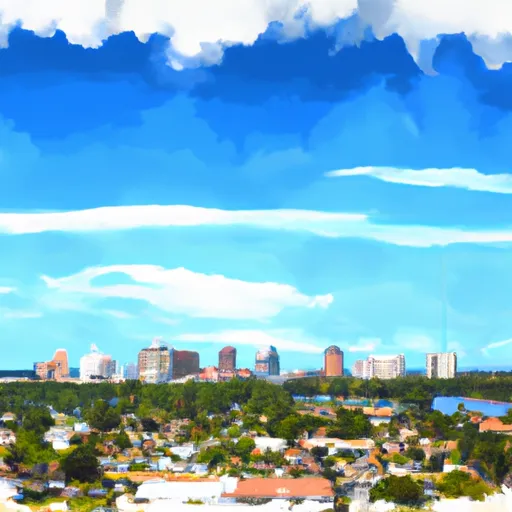-
 Snoflo Premium
Snoflo Premium
Get unlimited access to all our content
With no Ad interruptions! - Start Your Free Trial Login with existing account
Lake-Alfred
Eden Index
Climate
6.7
•
Recreation
4.5
•
Community
1.6
•
Safeguard
4.7/10

Lake Alfred is a small city located in Polk County, Florida. It enjoys a subtropical climate, characterized by hot and humid summers and mild winters. Summers in Lake Alfred are typically long and rain-filled, with temperatures reaching the low to mid-90s Fahrenheit. Winters are short and mild, with temperatures ranging from the 50s to 70s Fahrenheit.
The city's hydrology is dominated by the presence of three main water bodies: Lake Alfred, Lake Rochelle, and Lake Haines. These lakes provide excellent opportunities for boating, fishing, and water sports. Anglers can catch a variety of fish species including bass, crappie, and catfish in these lakes.
Additionally, Lake Alfred is home to several parks and recreational areas that offer a range of outdoor activities. The Lake Alfred Nature Park is a popular spot for hiking, birdwatching, and picnicking, with its lush vegetation and scenic views. The Mackay Gardens and Lakeside Preserve is another natural gem, featuring beautiful gardens, trails, and a historic home.
Overall, Lake Alfred's climate, hydrology constituents, and outdoor recreation opportunities make it a desirable destination for those seeking to enjoy Florida's natural beauty and engage in various outdoor activities.
What is the Eden Index?
The Snoflo Eden Index serves as a comprehensive rating system for regions, evaluating their desirability through a holistic assessment of climate health, outdoor recreation opportunities, and natural disaster risk, acknowledging the profound impact of these factors on livability and well-being.
Climate Health Indicator (CHI): 6.7
Lake-Alfred receives approximately
1322mm of rain per year,
with humidity levels near 88%
and air temperatures averaging around
23°C.
Lake-Alfred has a plant hardyness factor of
9, meaning
plants and agriculture in this region tend to thrive here all year round.
By considering the ideal temperature range, reliable water supplies, clean air, and stable seasonal rain or snowpacks, the Climate Health Indicator (CHI) underscores the significance of a healthy climate as the foundation for quality living.
A healthy climate is paramount for ensuring a high quality of life and livability in a region, fostering both physical well-being and environmental harmony. This can be characterized by ideal temperatures, reliable access to water supplies, clean air, and consistent seasonal rain or snowpacks.
Weather Forecast
Streamflow Conditions
Peace
Area Rivers
Peace
Snowpack Depths
Peace
Reservoir Storage Capacity
Peace
Groundwater Levels
Recreational Opportunity Index (ROI): 4.5
The Recreational Opportunity Index (ROI) recognizes the value of outdoor recreational options, such as parks, hiking trails, camping sites, and fishing spots, while acknowledging that climate plays a pivotal role in ensuring the comfort and consistency of these experiences.
Access to outdoor recreational opportunities, encompassing activities such as parks, hiking, camping, and fishing, is crucial for overall well-being, and the climate plays a pivotal role in enabling and enhancing these experiences, ensuring that individuals can engage in nature-based activities comfortably and consistently.
Camping Areas
| Campground | Campsites | Reservations | Toilets | Showers | Elevation |
|---|---|---|---|---|---|
| Highlands Hammock State Park | None | 136 ft | |||
| Alexander Springs | 181 | 49 ft | |||
| Lake Louisa State Park | None | 154 ft | |||
| Magnolia County Park | 96 | 81 ft | |||
| Big Bass | 34 | 69 ft | |||
| Saddle Creek County Park | None | 111 ft | |||
| Clearwater Lake | 62 | 81 ft | |||
| Big Scrub | 50 | 145 ft | |||
| Trimble County Park | 15 | 65 ft | |||
| Lake Griffin State Rec Area | None | 85 ft |
Catastrophe Safeguard Index (CSI):
The Catastrophe Safeguard Index (CSI) recognizes that natural disaster risk, encompassing floods, fires, hurricanes, and tornadoes, can drastically affect safety and the overall appeal of an area.
The level of natural disaster risk in a region significantly affects safety and the overall livability, with climate change amplifying these risks by potentially increasing the frequency and intensity of events like floods, fires, hurricanes, and tornadoes, thereby posing substantial challenges to community resilience and well-being.
Community Resilience Indicator (CRI): 1.6
The Community Resilience Indicator (CRI) recognizes that education, healthcare, and socioeconomics are crucial to the well-being of a region. The CRI acknowledges the profound impact of these elements on residents' overall quality of life. By evaluating educational resources, healthcare accessibility, and economic inclusivity, the index captures the essential aspects that contribute to a thriving community, fostering resident satisfaction, equity, and social cohesion.

